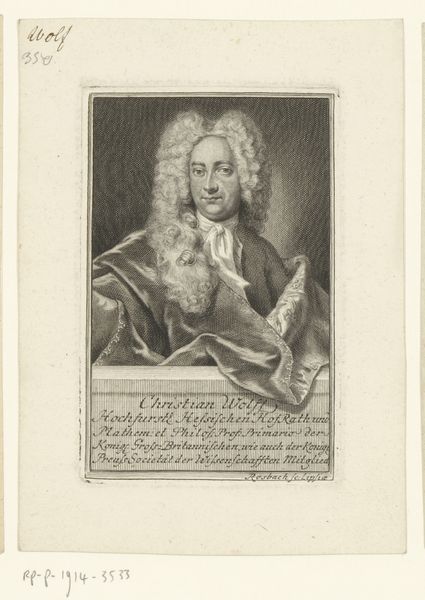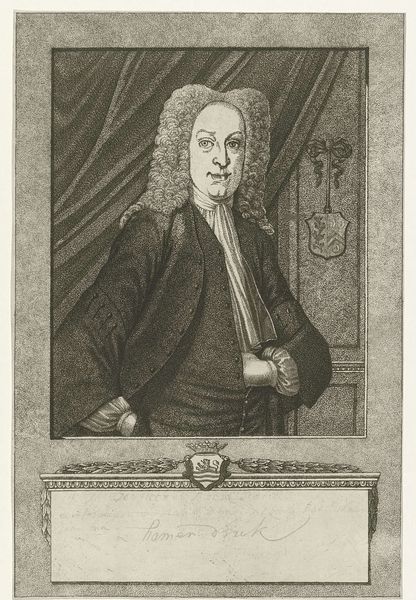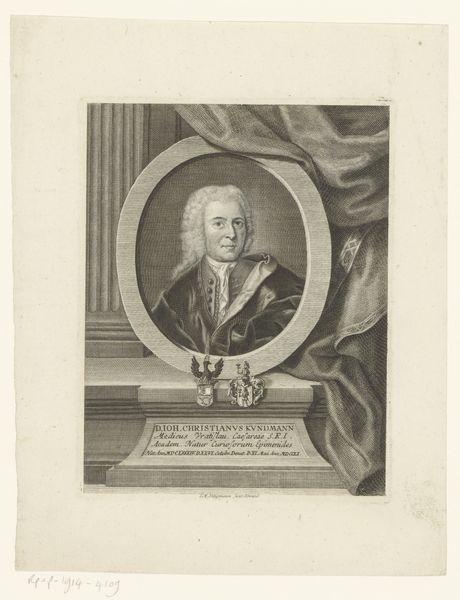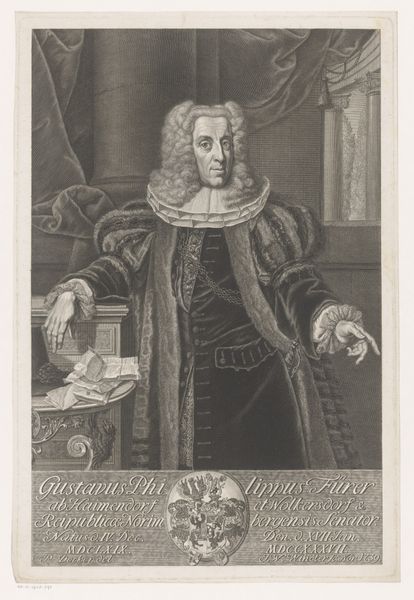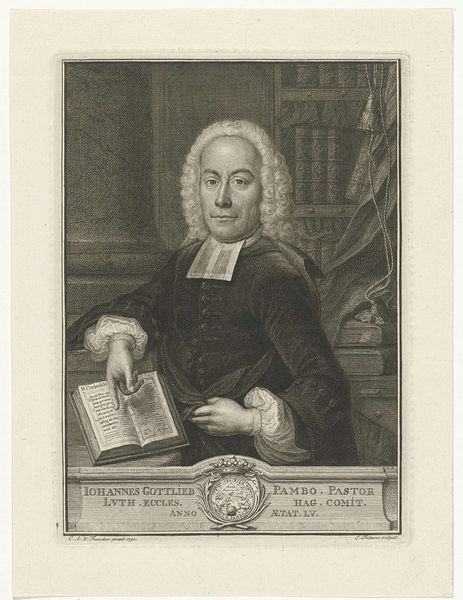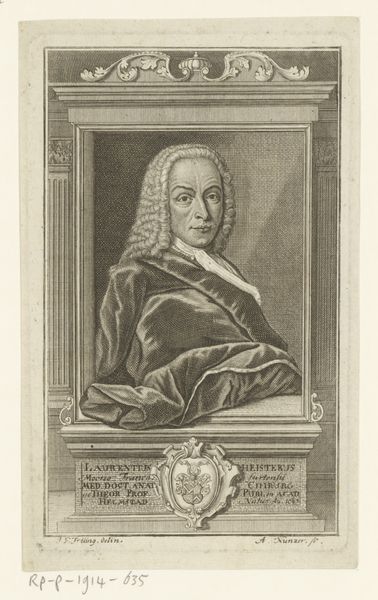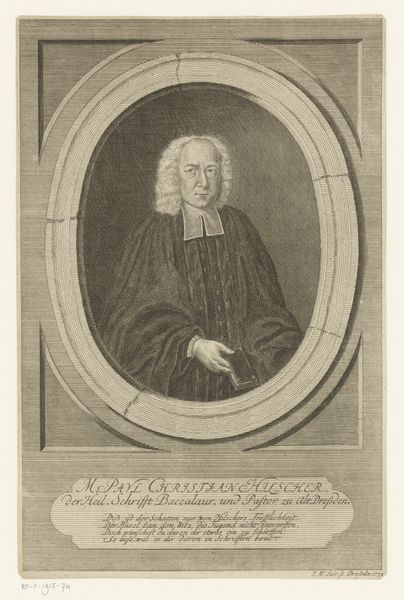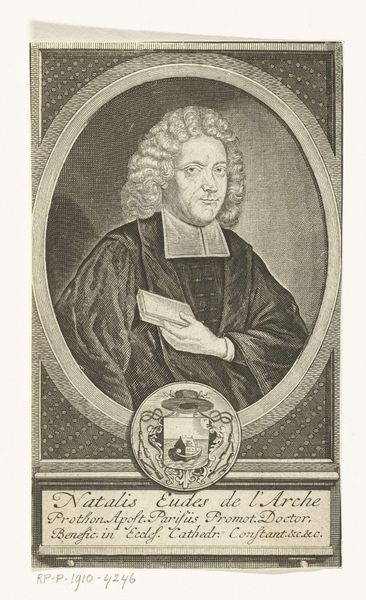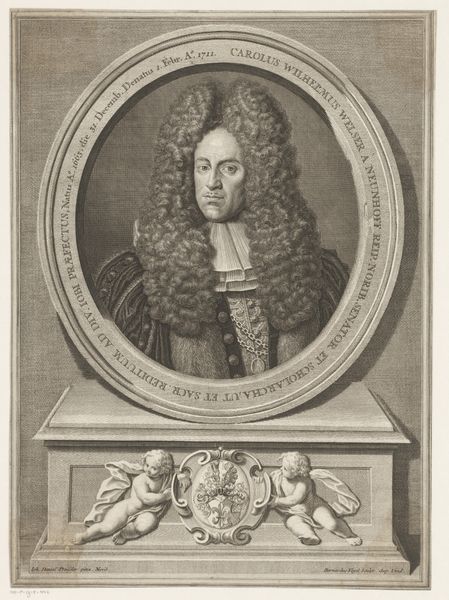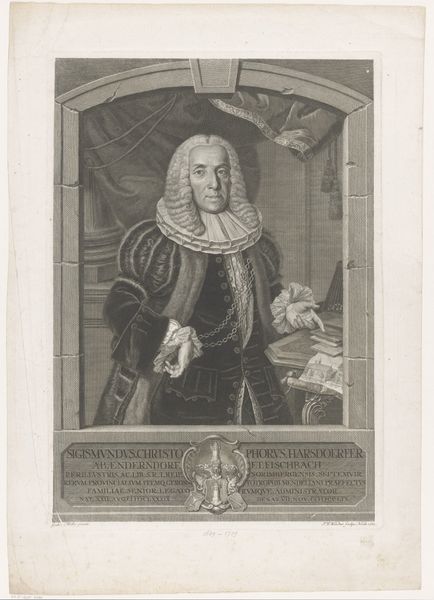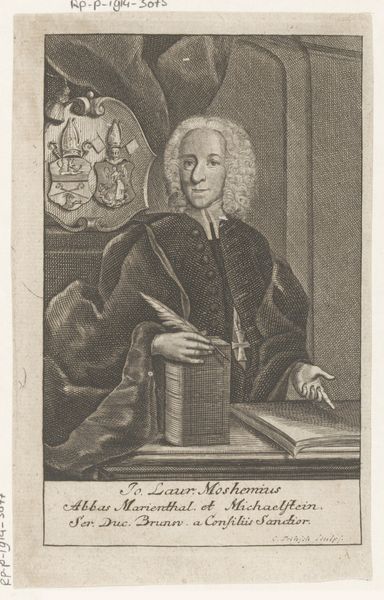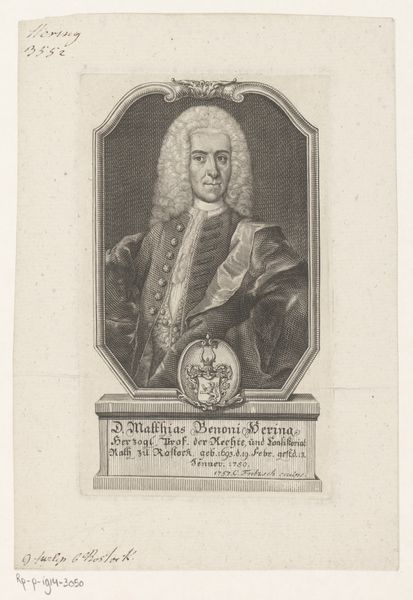
Dimensions: height 406 mm, width 280 mm
Copyright: Rijks Museum: Open Domain
Editor: So, this is George Kockers’ “Portret van Pieter de la Rue” from 1802. It’s an engraving on paper, housed at the Rijksmuseum. I’m struck by the detail – all those fine lines. What do you see in this piece? Curator: I see a man consciously projecting power, meticulously coded into symbols understood by his contemporaries. Consider his wig. It is more than just fashion; it denotes status, intellect, and adherence to social norms of the time, which in turn, convey authority and prestige. Notice anything else? Editor: The crest in the bottom border? Curator: Precisely. Coats of arms aren't merely decorative, they encapsulate lineage, achievements, and the collective identity of a family or a city, in this case. So Kockers uses symbolism to cement Pieter de la Rue into a powerful history, building and reinforcing identity and cultural values. What do you think this engraving might tell someone looking at it centuries later? Editor: That people in positions of power were aware of how they were being presented? That carefully curated images aren’t necessarily a new thing? Curator: Exactly. The piece serves as a time capsule, conveying specific ideals of leadership. Pieter de la Rue understood that representation matters, which holds cultural significance and meaning far beyond the purely aesthetic, I think. Editor: That makes you wonder what symbols in our modern portraits might be saying. Thanks for sharing your perspective!
Comments
No comments
Be the first to comment and join the conversation on the ultimate creative platform.
